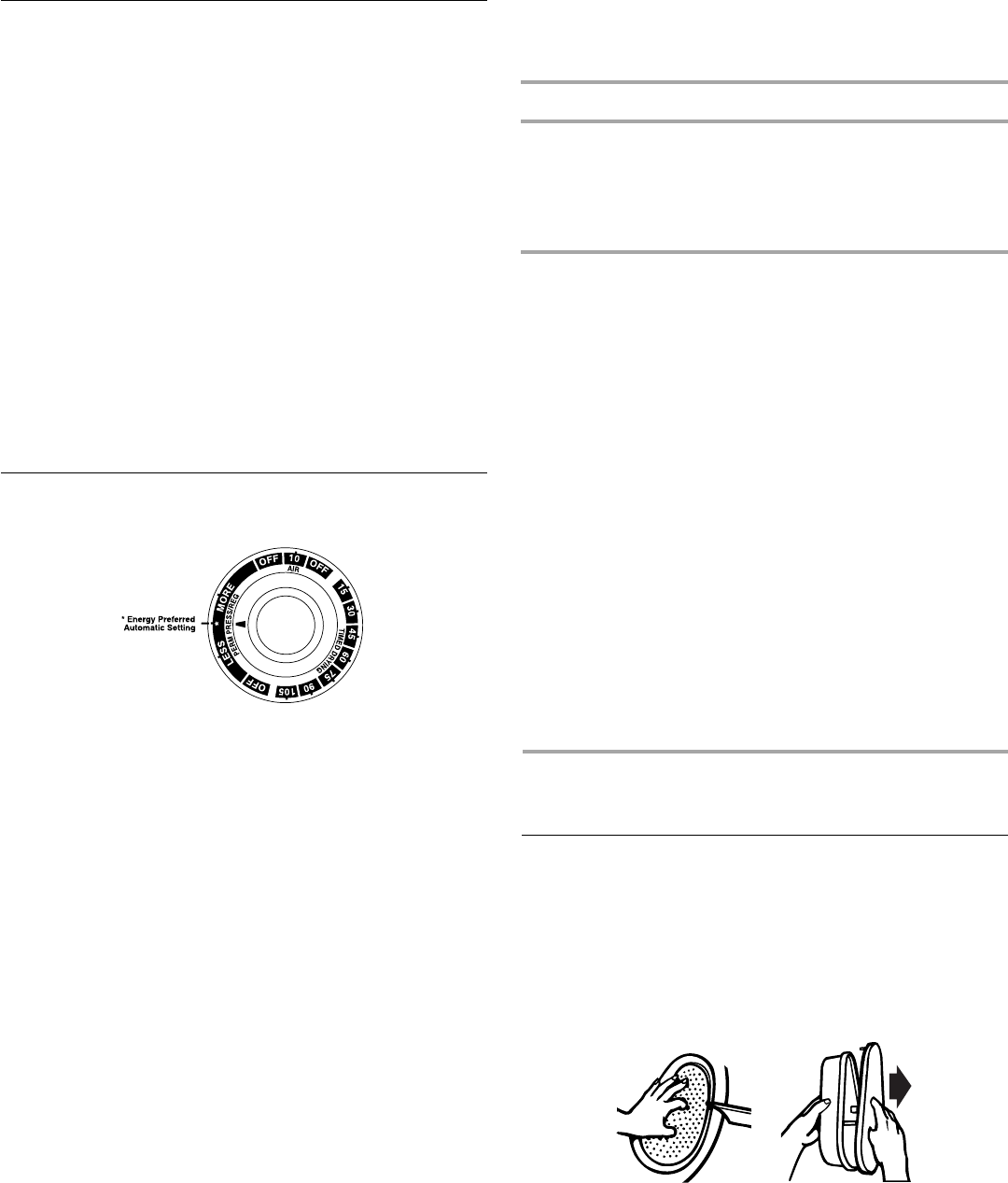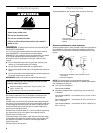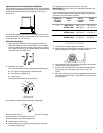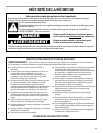
10
Drying, Cycle, and Temperature Tips
Select the correct cycle and temperature for your load.
Your dryer tumbles the load without heat during the last few
minutes of all cycles to make the load easier to handle.
Drying tips
■ Follow care label directions when they are available.
■ If you use fabric softener sheets, use only those labeled
“dryer safe.” Follow package instructions.
■ Remove the load from the dryer as soon as tumbling stops to
reduce wrinkling. This is especially important for permanent
press, knits, and synthetic fabrics.
Cycle and temperature tips
■ Dry most loads using the Energy Preferred Automatic
Setting (
*
).
■ Use a no heat (air) setting for rubber, plastic, or heat sensitive
fabrics.
■ Line dry bonded or laminated fabrics.
NOTE: If you have questions about drying temperatures for
various loads, refer to the care label directions.
Cycles
Cycle Control knob
Perm Press/Regular Cycle
This automatic cycle shuts off the dryer when the selected
dryness is reached. The Cycle Control knob does not move
until the load is almost dry. After the cool down, the knob
automatically turns to an Off area and tumbling stops.
Dry most loads using the Energy Preferred Automatic Setting (
*
).
■ If the load is drier than you like, select a setting closer to
Less the next time you dry a similar load.
■ If the load is not as dry as you like, complete drying using the
Timed Drying cycle. The next time you dry a similar load,
select a setting closer to More.
NOTE: Drying time with an automatic cycle varies according to
the type of fabric and size of load.
Air Cycle
Use this cycle for items that require drying without heat, such as
rubber, plastic, and heat-sensitive fabrics. See the chart for
examples of items that can be dried using an air cycle.
*(Minutes). Reset cycle to complete drying, if needed.
When using an air cycle
■ Check to see that coverings are securely stitched.
■ Shake and fluff pillows by hand periodically during cycle.
■ Dry item completely. Foam rubber pillows are slow to dry.
Timed Drying Cycle
Use this cycle to complete drying if items are still damp after the
automatic cycle.
Timed Drying is also useful for:
■ Heavyweight items and work clothes that require a long
drying time.
■ Lightweight items, such as lingerie, blouses, and knits that
require a short drying time.
For damp dry, turn the Cycle Control knob to 30 minutes or less.
End of Cycle Signal
The dryer sounds a signal to let you know when the cycle is
finished. The signal is not adjustable and cannot be turned off.
The signal is helpful when you are drying permanent press,
synthetics, and other items that should be taken out as soon as
the dryer stops.
DRYER CARE
Cleaning the Lint Screen
Every load cleaning
The lint screen is located inside the dryer drum, on the back wall.
Clean it before each load. A screen blocked by lint can increase
drying time.
To clean
1. Open the door and pull the lint screen straight out.
2. Squeeze body of lint screen lightly while pulling off the cover.
3. Roll lint off the screen with your fingers. Do not rinse or wash
screen to remove lint. Wet lint is hard to remove.
4. Replace cover on lint screen body. Push the lint screen firmly
back into place and close the door.
Type of Load Time*
Foam rubber—pillows, padded bras,
stuffed toys
Plastic—shower curtains, tablecloths
Rubber-backed rugs
Olefin, polypropylene, sheer nylon
20 - 30
20 - 30
40 - 50
10 - 20


















